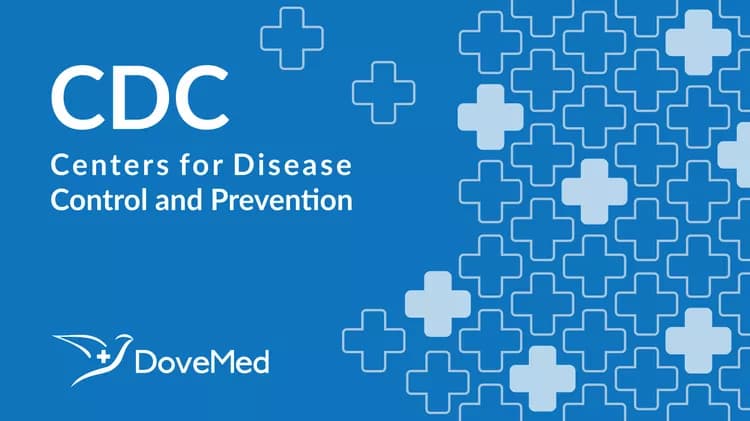
Announcing the Healthcare-Associated Venous Thromboembolism Prevention Challenge Champions: Hospital Systems Saving Lives through Innovative Prevention Efforts
Announcing the Healthcare-Associated Venous Thromboembolism Prevention Challenge Champions: Hospital Systems Saving Lives through Innovative Prevention Efforts
The U.S. Centers for Disease Control and Prevention (CDC) today recognized eight hospitals and healthcare systems as Healthcare-Associated Venous Thromboembolism (HA-VTE) Prevention Champions for their success in implementing innovative and effective ways to prevent venous thromboembolism in healthcare settings.
Venous thromboembolisms, or VTEs, are blood clots that form deep in the body (deep vein thrombosis), in the lungs (pulmonary embolism), or both. It’s a serious and growing public health problem. Estimates suggest that up to 900,000 VTE events occur in the U.S. each year, resulting in as many as 100,000 premature deaths. VTE-associated healthcare costs may be as high as $10 billion a year.
People who are currently or recently hospitalized, recovering from surgery, or being treated for cancer are at increased risk for developing these deadly blood clots. About half of all VTE events are related to hospitalization or surgery.
“Healthcare-associated VTE is a serious and growing public health problem,” said CDC Director Thomas Frieden, MD, MPH. “These challenge winners saved lives by implementing innovative VTE prevention strategies in their institutions. We can all learn from their ideas and work together to protect patients from developing deadly blood clots.”
The Champions range from a small community hospital to some of the country’s largest health systems, and they represent both rural and urban areas. Together they cared for more than 450,000 patients admitted to hospitals across the United States in 2014. They were able to improve VTE prevention within their institutions and organizations by implementing innovative, effective and sustainable VTE prevention strategies, including these:
Engaging teams of different healthcare experts to support and promote prevention activities;
Informing patients and providers about the need for and benefits of VTE prevention;
Using technology (such as electronic risk assessment and clinical decision support tools and alerts) to ensure that all patients are assessed for their risk for VTE and bleeding. These tools also help ensure patients, when appropriate, are provided with and use appropriate prevention measures for their level of risk; and
Providing real-time feedback, scorecards and dashboards for providers and organizations to monitor performance and identify areas for improvement.
Honorable Mention
CDC also recognized four organizations with honorable mentions for their innovative and unique approaches to prevention in special populations and settings. These include post-discharge monitoring, a unique ambulation program for psychiatric inpatients, an innovative prophylaxis-dosing protocol for level 1 trauma units, and an international submission on risk assessment for obstetric patients.
The HA-VTE Prevention Challenge was launched on November 2, 2015, to find and reward hospitals, managed care organizations and hospital networks that implemented innovative and effective ways to prevent HA-VTE. CDC, along with the Agency for Healthcare Research and Quality (AHRQ), is sharing these best practices with others to help strengthen VTE prevention efforts. Applicants were asked to describe their VTE prevention strategy and the specific interventions, methods, and systems used to implement, support and evaluate their strategy. Entrants also provided evidence showing an increase of VTE prevention activities and/or a decrease in HA-VTE rates. A panel of six judges from across the Department of Health and Human Services reviewed each entry to determine the top submissions in four categories.
“We, along with AHRQ, are excited to showcase the innovative and effective strategies of this inaugural challenge,” said Coleen Boyle, PhD, MSHyg, director of CDC’s National Center on Birth Defects and Developmental Disabilities. “These challenge winners are examples of how any health care setting, from a small hospital to a large healthcare system, can implement approaches to protect people and save lives from healthcare-associated VTE.”
The HA-VTE Prevention Challenge Champions are:
Large Healthcare Network or Multi-Hospital System
Mayo Clinic, Rochester, Minnesota
University of California Health, Center for Health Quality and Innovation, Oakland, California
Medium Healthcare Network or Multi-Hospital System
University of Wisconsin Health, Madison, Wisconsin
Intermountain Healthcare, Murray, Utah
Large Single Hospital
Northwestern Memorial Hospital, Chicago, Illinois
The Johns Hopkins Hospital, Baltimore, Maryland
Small to Medium Single Hospital
Harborview Medical Center, Seattle, Washington
Hutchinson Regional Medical Center, Hutchinson, Kansas
Honorable Mention for Unique Populations and Interventions
Michigan Hospital Medicine Safety Consortium, Ann Arbor, Michigan
Sheppard Pratt Hospital, Baltimore, Maryland
Rotunda Hospital, Dublin, Ireland
University of Cincinnati Medical Center, Cincinnati, Ohio
For more information on this initiative and to view profiles of the winners and their initiatives, please visit http://www.cdc.gov/ncbddd/dvt/ha-vte-challenge.html.
For more information on HA-VTE, visit http://www.cdc.gov/ncbddd/dvt/ha-vte.html.
###
U.S. DEPARTMENT OF HEALTH AND HUMAN SERVICES
Related Articles
Test Your Knowledge
Asked by users
Related Centers
Related Specialties
Related Physicians
Related Procedures
Related Resources
Join DoveHubs
and connect with fellow professionals

0 Comments
Please log in to post a comment.